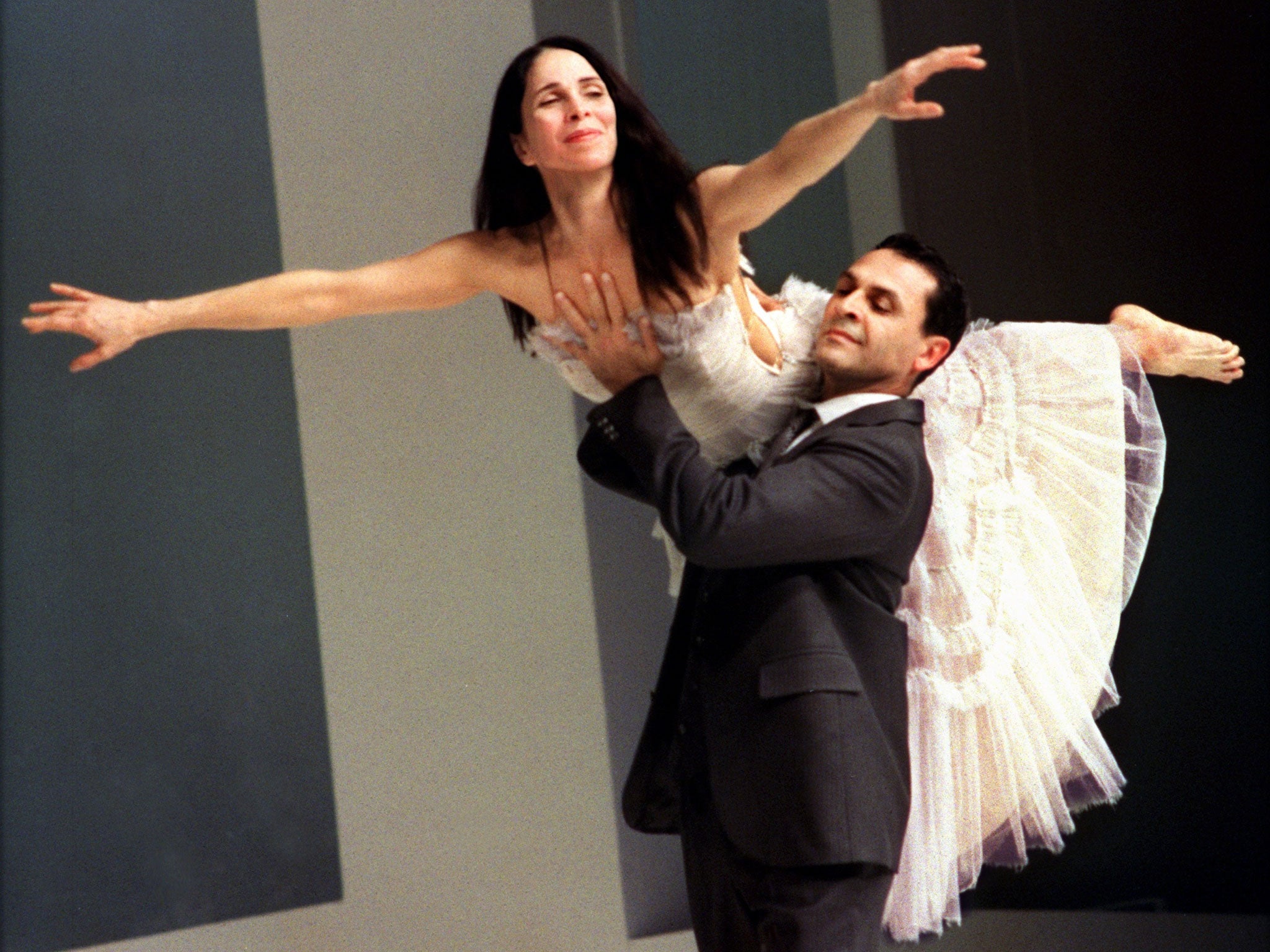Dance review: Kick off your shoes and go up in the world with Two Cigarettes in the Dark
Striding on in stilettos or falling out of their clothes, Pina Bausch's women are daring and reckless – until the married couples' waltz

Pina Bausch once said that it sometimes felt as if she'd been working on the same piece for 20 years. It feels that way for the audience too when a distraught, wild-haired woman in a strapless gown flings herself into a flailing dance so violent that her breasts work free of the dress.
We're on familiar territory, too, with the pair of champagne-quaffing chaps who dribble down their tuxedos, and the woman who runs blindly into walls, trailing a battered saucepan roped to her waist. It's business as usual in the accumulation of sketches and fleeting images that cast a critical light on the way men and women negotiate their differences. But anyone expecting the high passion of Rite of Spring or the sensational incident of Palermo, Palermo will feel short-changed. Two Cigarettes in the Dark, from 1985, seems to occupy a breathing space in the late choreographer's work. This isn't, for once, about love or death, but about the way people deal with the lowering grit of the day-to-day. It's a slap in the face for St Valentine, and over three hours it's a gruelling watch.
Peter Pabst's set doesn't set out to impress. Three picture windows, on three walls, present three eco-systems: tanks of fish, arid desert, and lush jungle, which might be the Garden of Eden but for the loved-up couple who no sooner wander into it than they are shot dead in the evening's blackest bid for comedy.
As always, there are the high heels, Bausch's equivalent of pointe shoes in the way they give the women a perilous advantage, at once raising them up and hobbling them. They also ground the action in the regular world of social life and work. When the women kick off those shoes, they look suddenly undressed, the hems of their absurdly elaborate frocks crumpled like collapsing buildings. With Bausch, no detail is accidental.
The two cigarettes of the title refer to a Bing Crosby song that appears only briefly at the end, though there's enough on-stage smoking throughout to trigger a full-scale health campaign. A more memorable use of music comes in the work's quarter-hour set piece, when four hand-holding couples propel themselves on their bottoms to Ravel's La Valse, an orchestral fantasia of swooning romanticism. As an image of marital commitment, this strenuous sculling-to-nowhere is as bleak as it gets.
By coincidence, the same piece of Ravel opened the Royal Ballet's tribute to Frederick Ashton (Ashton Anniversary bill, Royal Opera House, London ****) earlier in the week, this time lit by chandeliers and animated by clouds of bobbing gauze skirts, so many that you'd think there were mirrors somewhere. Diaghilev famously rejected Ravel's score as undanceable, and I've never been entirely convinced by Ashton's treatment, though I'm told it works better from the balcony, from where you see the patterns, rather than the stalls, from where you tend to focus on the feet, and the asynchronicity of their ups and downs.
The evening is a pick and mix from Ashton's mid-career, culminating in Marguerite and Armand, the 1963 drama created for the then newly partnered-up Margot Fonteyn and Rudolf Nureyev, and now, 50 years later, a belated swansong for Tamara Rojo and Sergei Polunin, both of whom have left the company .
There is an undoubted poignancy in the resemblance of the young Russian to the role's original incumbent: 23-year-old Polunin not only has the heroic looks but also the animalism of Nureyev, whose physical intensity seemed to Ashton, at the time, to be "a reincarnation of Liszt". Yet Polunin appears to want to distance himself from the company that trained him, and one wonders what Kevin O'Hare, the Royal Ballet's new director, had to do to persuade him back for three performances.
Whatever, it was worth it for the va-va-voom he gave Tamara Rojo to work with. Her Marguerite suffered and trembled and died a treat as Liszt's Sonata in B minor thundered and growled to its close. Strangely, though, for me that ballet's polar opposite, Ashton's cool, lunar Monotones, two mid-Sixties trios set to limpid Satie, were the evening's real sensation – a gleaming presage of the future, rather than a romp in the past.
'Two Cigarettes' (0844 412 4300) to 25 Feb; Ashton bill (020-7304 4000) to Sat
Critic's Choice
The panto season may be over, but the first UK tour of David Bintley’s Aladdin, created for the National Ballet of Japan in 2008, has only just begun (above). Birmingham Royal Ballet now take up the turbanned tale of a tearaway’s attempts to foil an evil Maghrib, and his romantic pursuit of an emperor’s daughter, set to an original score by Carl Davis. At Birmingham Hippodrome till Sat, then at The Lowry, Salford; Plymouth Theatre Royal; Sunderland Empire; and Sadler’s Wells in London.
Subscribe to Independent Premium to bookmark this article
Want to bookmark your favourite articles and stories to read or reference later? Start your Independent Premium subscription today.

Join our commenting forum
Join thought-provoking conversations, follow other Independent readers and see their replies